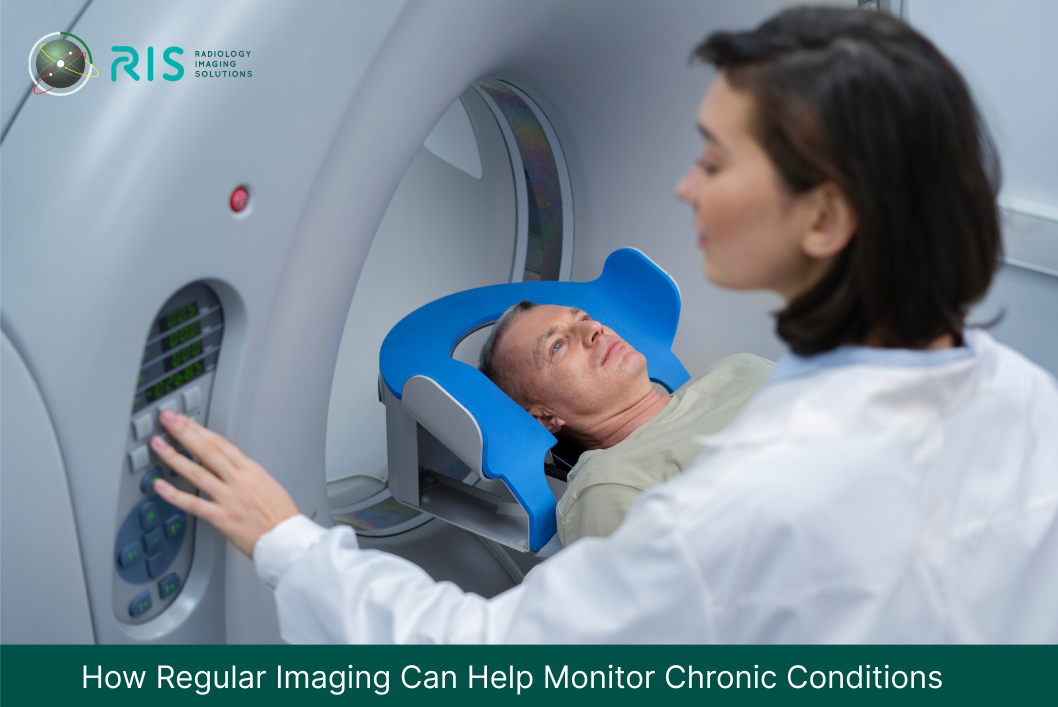In the landscape of modern healthcare, managing chronic conditions requires a comprehensive approach that goes beyond just treating symptoms. One of the most powerful tools in a healthcare provider’s arsenal is regular medical imaging. By leveraging various diagnostic imaging services
, healthcare professionals can track disease progression, adjust treatment plans, and ultimately improve patient outcomes.
Let’s explore how regular imaging serves as a crucial component in the long-term management of chronic conditions.
Types of Chronic Conditions That Benefit from Regular Imaging
1) Arthritis
Arthritis is a common chronic condition that affects the joints. Over time, the cartilage that cushions the joints deteriorates, causing pain and inflammation. Regular imaging can track the progression of joint damage, helping doctors determine the best course of treatment.
2) Cardiovascular Diseases
Heart disease and other cardiovascular conditions require constant monitoring. Imaging is a vital tool in assessing the heart’s health, including the condition of blood vessels and the heart muscle. They help identify blockages, heart enlargement, or areas of tissue damage.
3) Chronic Respiratory Diseases
Conditions like chronic obstructive pulmonary disease (COPD) or asthma can benefit from regular imaging. Chest scans help monitor lung function and detect complications such as infections, fluid buildup, or lung damage.
4) Cancer
For cancer patients, imaging plays a critical role in monitoring tumour growth or shrinkage. They help doctors assess the effectiveness of treatment and detect any recurrence early.
5) Diabetes-Related Complications
Diabetes often leads to complications that impact multiple organs and systems, such as the kidneys, eyes, and feet. Regular imaging, such as ultrasound or CT scans, plays a critical role in monitoring these complications. For diabetic patients, foot health is particularly important, as conditions like neuropathy and ulcers can develop silently.
Coupled with imaging, specialised care like diabetes podiatry can help manage and prevent severe outcomes by providing targeted treatment and advice for foot-related concerns.
Key Imaging Modalities for Chronic Condition Monitoring
Different chronic conditions require different imaging approaches. The choice of imaging modality depends on various factors, including the specific condition being monitored, the area of the body involved, and the type of information needed. Here are a few of the most frequently employed medical imaging techniques:
1) X-rays
X-rays are a cornerstone of medical imaging, particularly when it comes to assessing bone and joint health. They excel at visualising bone structures, making them invaluable for diagnosing conditions like fractures, bone spurs, and the gradual deterioration associated with osteoarthritis.
2) Magnetic Resonance Imaging (MRI)
MRI excels in providing detailed images of soft tissues, making it particularly valuable for monitoring conditions affecting the brain, spine, and joints. For patients with multiple sclerosis, regular MRI scans help track the development of new lesions and evaluate treatment effectiveness.
Similarly, those with rheumatoid arthritis benefit from MRI’s ability to detect early joint changes before they become apparent through physical examination.
4) Computed Tomography (CT)
OPG CT scans offer exceptional detail of both soft tissues and bone structures, making them ideal for monitoring conditions like lung disease, cancer, and complex orthopaedic conditions.
Regular CT scans can help track tumour growth or regression in cancer patients and monitor lung damage progression in those with chronic obstructive pulmonary disease (COPD).
4) Ultrasound
Non-invasive and radiation-free, ultrasound imaging proves particularly useful for monitoring conditions affecting soft tissues and blood vessels. It’s frequently used to track the progression of liver disease, monitor kidney function, and evaluate heart health in patients with cardiovascular conditions.
The real-time nature of ultrasound also makes it valuable for guiding procedures and assessing blood flow.
5) Musculoskeletal Ultrasound
Non-invasive and radiation-free, musculoskeletal ultrasound is particularly useful for evaluating conditions affecting muscles, tendons, ligaments, joints, and soft tissues. It’s frequently used to assess injuries like tendon tears, ligament sprains, and inflammation around joints.
The real-time nature of musculoskeletal ultrasound also makes it valuable for guiding procedures such as joint injections, diagnosing fluid accumulation, and assessing dynamic movements of muscles and tendons.
Benefits of Regular Imaging in Chronic Condition Management
Early Detection of Complications
- Personalised Treatment Plans
- Tracking Disease Progression
- Improved Patient-Doctor Communication
One of the key advantages of regular imaging is early detection. Chronic conditions often have subtle symptoms that can be easy to overlook.
Imaging can identify complications before they become severe, which is essential for conditions like heart disease, cancer, and arthritis. Early intervention leads to better treatment outcomes and can prevent the escalation of issues.
Personalised Treatment Plans
Chronic conditions vary greatly from patient to patient. What works for one person’s treatment might not be the best choice for someone else. With regular imaging, doctors can tailor treatment plans to the needs of each patient. This personalised approach ensures that the treatment is as effective as possible, minimising side effects and optimising outcomes.
Tracking Disease Progression
Chronic conditions are often progressive, meaning they get worse over time. Imaging provides a visual record of how the disease is advancing. This allows healthcare providers to make adjustments to the treatment plan based on real, quantifiable data.
Whether it’s increasing the dosage of medication or recommending physical therapy, this information is invaluable.
Improved Patient-Doctor Communication
Patients often struggle to understand the severity of their condition because symptoms are invisible or subjective. Imaging gives both the patient and the doctor a concrete view of what’s happening inside the body. This can improve communication, as patients can better understand the importance of following treatment plans or making lifestyle changes. The visual representation also fosters trust in the healthcare process.
Practical Considerations and Best Practices
Frequency of Imaging
The optimal frequency of imaging varies depending on the condition, its severity, and the patient’s circumstances. Healthcare providers carefully balance the benefits of regular monitoring against factors such as radiation exposure (in the case of CT scans) and cost. They develop personalised monitoring schedules that maximise the benefits while minimising potential risks.
Coordination of Care
Regular imaging works best as part of a coordinated care approach. Healthcare providers should ensure effective communication between all members of the care team, including radiologists, specialists, and primary care physicians. This coordination ensures that imaging results are properly interpreted and integrated into the overall treatment plan.
Patient Education and Preparation
Successful implementation of regular imaging protocols requires patient understanding and cooperation. Healthcare providers should take time to explain the importance of regular imaging, what to expect during procedures, and how to prepare for each type of scan.
Looking to the Future
Advances in medical imaging technology continue to enhance our ability to monitor chronic conditions. Artificial intelligence and machine learning are increasingly being integrated into imaging analysis, helping to detect subtle changes that might be missed by human observers alone.
These technological advances, combined with improvements in imaging equipment, promise even more precise and personalised monitoring capabilities in the future.
Contact RIS for Your Imaging Needs
RIS is here to provide state-of-the-art imaging solutions to help manage chronic conditions with precision and care. Our advanced imaging technologies allow for early detection, personalised treatment plans, and accurate tracking of disease progression. If you or a loved one is living with a chronic condition, don’t wait to get the care you deserve.
Get in touch with RIS today to schedule an appointment and let us help you monitor your condition with the latest medical imaging technology.


Leave a Reply